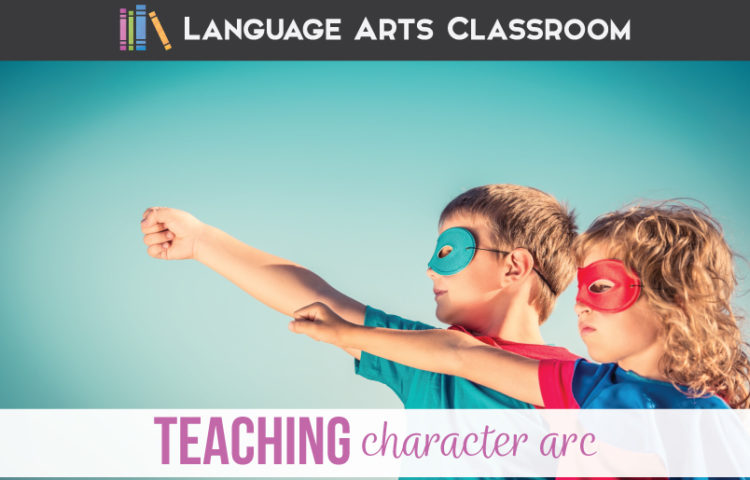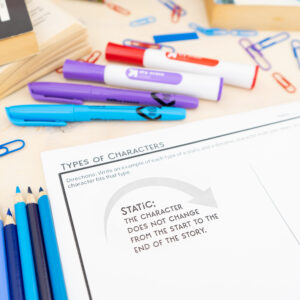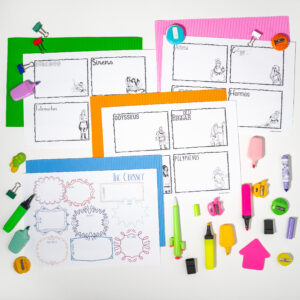Teaching a character arc? Exploring a character’s development through a story is a fabulous way for teaching character analysis.
A character arc includes the changes and growth a character has throughout a story—written or on screen. When students struggle to understand this with literature, I show a video to introduce the topic. Additionally, it helps to bring in a pop culture reference. Next, I typically provide different examples based on where students lead me. We will talk about superheroes, popular characters from movies, and antiheroes. Finally, we will cover static, flat, round, dynamic, and stock characters.
What is involved in teaching character arc?
Lots. Every story has a character, and no one approach fits into teaching a character’s change throughout the course of the story. Below, I’ve provided ideas to implement over the course of a story. Mix and match these examples where your classes need them.
Start with a good story.
Any chance I think I can safely allow students to shape the lesson, I allow them to do so. When I have a character with a massive character arc, it helps for students to think of characters they already love.
To introduce the concept, I ask students to name characters who massively change in a story. Without hesitation, they mention Walter White from the show “Breaking Bad.” That is fine, but I skew them toward characters we can discuss more, “cleaner” characters so to speak. Walter White has a negative change arc. Can we consider one with a positive change arc?
I switch the discussion toward comic book characters, and without fail, I have a group who will gladly educate everyone about their favorite comic book heroes. Then, we continue the discussion of character arcs.
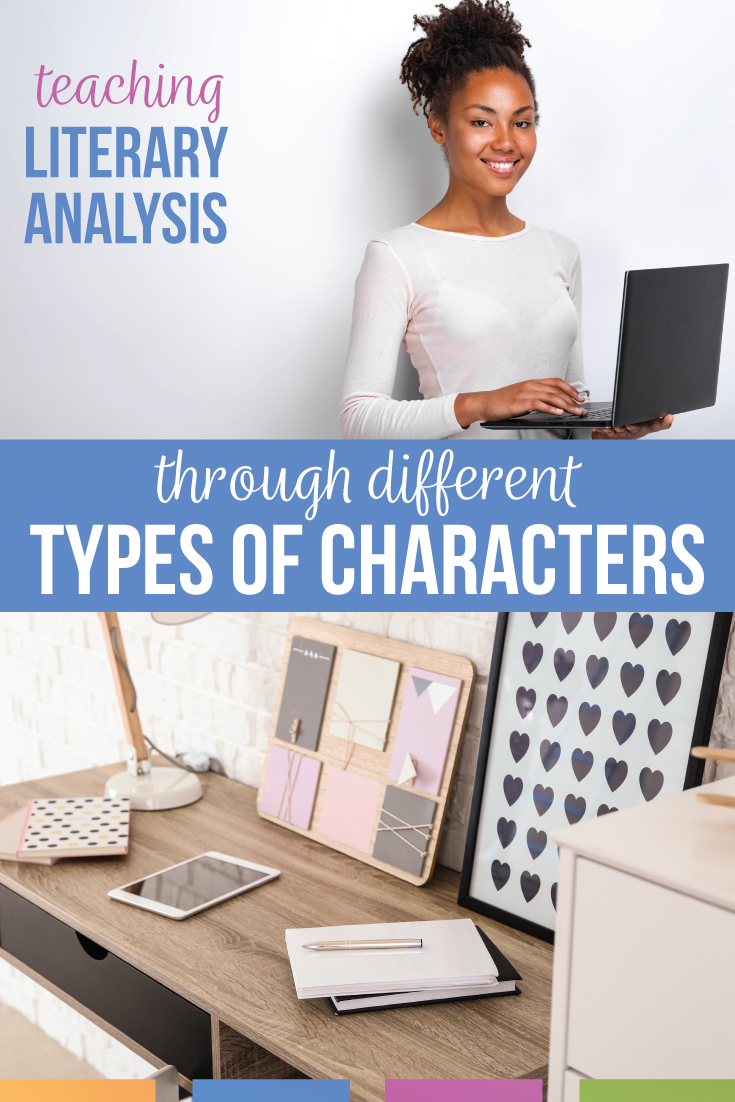
Discuss superheroes.
Superheroes have massive character arcs. Some students read comic books and others are more familiar with movies. Either way, you can teach the literary term ‘character arc’ through a beloved superhero.
For instance, I love Batman and its villains, and I will still pick up a comic book if it is around. Part of my fascination is that a small boy saw a brutal murder and formed a new identity to rid the world of hurtful people. Some people might lean toward Wonder Woman or Captain America—run with their ideas!
My favorite is Superman, aka Clark Kent; his character arc extends more than Bruce Wayne’s. He’s a journalist, he loves Lois Lane, and he’s a bit dorky. I’m smitten.
What is his character arc though?
Superman is from the destroyed planet Krypton. (The setting matters!) His scientist father sent him to Earth, and he is raised in Kansas. His adoptive parents raised him with strong morals which later influence him as Superman. He worked as a reporter at the Daily Planet, alongside Lois Lane. He was “nerdish” and quiet but as the comics continue, he becomes a voice of reason and ethics. Students can see how his earlier life influenced his later life.
Superman worked to follow his morals, but conflicts forced internal conflict with the best course of action. He did not alter the world even though he could—with the exception of turning time backwards to save Lois Lane. He also fights with Lex Luthor, whom he never kills despite his flaws, even though he obviously could.
Depending on what show you see or what story you read, you will see a different character arc for Superman. Discussing how the character arc is created by different writers can be part of a classroom discussion.
After students relate to a superhero’s character arc, we can probably circle back to the character from our story. Sometimes a class won’t want to discuss a superhero. Then I rely on regular childhood characters.
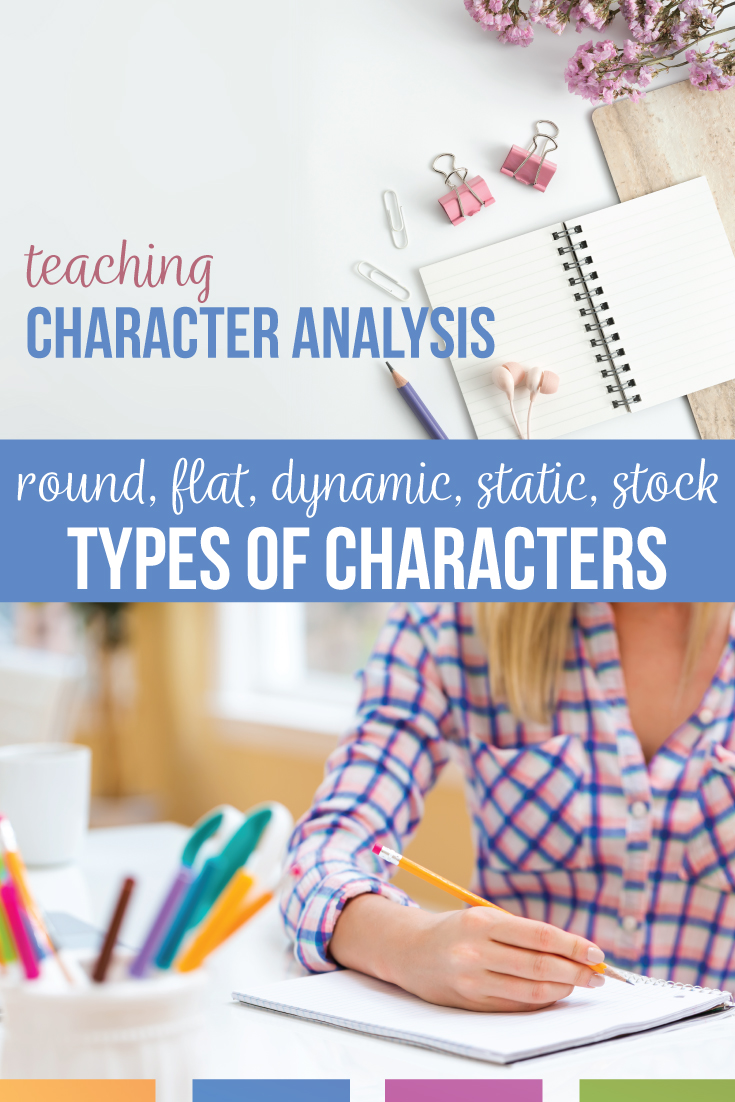
Find regular characters.
I typical start with superheroes, but with any any class discussion, you’ll need alternatives. One of the points to teaching character arc is to build on prior knowledge. When we apply the concept to characters students already know, we are setting them up for success.
As I continue teaching character arc, I incorporate other examples. A few other ideas if you have non-superhero fanatics:
- Beast from Disney’s “Beauty and the Beast.” When we meet him, he is a recluse and in flashbacks we learn he was cruel and arrogant. He changes throughout the movie and finally puts others ahead of himself. What forces his personality changes? Is his character arc a complete curve or does it stagnate at times?
- Junie B. Jones. Students often look back fondly at this series. Junie B. grows throughout the series in how she treats people, how she accepts obstacles, and how she approaches school.
- Darth. Vader. “Star Wars” fans? Debate if the first movies should be included in his character arc, and then discuss how the epitome of evil eventually saves his son. (Tears.) Students might also want to talk about Luke, Leia, Lando, or Hans.
- The Hunger Games characters. Katniss changes greatly throughout the three books. She is angry and guarded, but at the end of the series, she falls in love and forgives many people. Peeta and Haymitch also have incredible character arcs.
- Apollo Creed. Rocky has a huge fan base of a secretive nature. Whenever I mention Apollo’s character arc, students pipe up.
Characters who overcome an obstacle probably have a character arc that you can find meaning in sharing with students. I try to steer students toward clean examples, especially with younger students. With antihero, students might mention some dubious actions.
Cover anti-hero.
Covering an anti-hero is fun while teaching character arc. It’s everything that high school students love: weird, against the grain, out of the ordinary, tricky, and oftentimes, badly behaved. Often, the main character is in a normal world, making them more interesting.
Teaching the anti-hero can be tricky—it goes against the norm and students may not initially see a character as the antihero. Some of my best class discussions with literature have surrounded what makes a character an anti-hero and if they cross over to antagonist.
Because an anti-hero is such an inappropriate character, be intentional in your class discussion.
Start with literature: protagonist and antagonist.
Review familiar terms, often protagonist and antagonist. Do readers ever find these characters to overlap? They might have an anti-hero.
I begin talking about Macbeth. Not all students have read that play and don’t understand him. I start with a “clean” and appropriate example. I summarize why Macbeth is an anti-hero: He murders King Duncan, yet the audience overall supports his misdeeds.
You could start with other examples from your favorite literature, perhaps Gatsby.
Ask students for examples.
In casual conversation with students, or in attempts at guiding them in understanding literature, I often rely on examples from pop culture. If students can understand anti-hero in a movie or television show, they can hopefully apply the idea in literature.
When teaching anti-hero, students will mention the most famous and controversial character—Walter White from “Breaking Bad.” Most of my students have seen “Breaking Bad” and if they haven’t, the show has become a part of our culture. Students know the basic premise: That White was a good guy, a teacher, and became an enormously terrible guy. What makes him an anti-hero is that the audience cheers for him, wants him to win even. We shouldn’t, though. Walter White ends up the worst kind of person.
Students often remark that they like Walter White and they know they shouldn’t! That is the heart of a good anti-hero. This takes balance to teach: The show is not school appropriate, but if I mention “anti-hero,” Walter White is the example most students consider. I don’t bring up the example, but when students do, I explicitly state that we will not detail his actions. Not every student has seen the show, and not every parent wants their child to know about White’s actions.
Bring it back to literature.
I bring the topic back to literature, normally with Mr. Jay Gatsby. Anti-hero is a literary term in The Great Gatsby. Jay, like Walter, runs an illegal business which funds a lifestyle. Both men feel that life has cheated them, and they find satisfaction in thinking outside the standard job choices.
One aspect I’ve worried about is giving students a difficult example. Walter White is normally the guy; he’s the ultimate bad guy, after all. I often allow students to ask me if a character is an example, and direct the conversation from there.
Show the monomyth and other archetypal character arcs.
The monomyth from Joseph Campbell’s research is present in most characters. Students generally understand the hero’s journey and enjoy mapping it out after they finish a story. If students have never studied this formula before, they are shocked at how often it is implemented. Walk through a few examples like Odysseus, Harry Potter, and Katniss Everdeen. What about Ebenezer Scrooge?
Once we study the circle and steps, students can see how a character arc grows. Most characters take those steps, and if they don’t follow the formula exactly, the variation is slight. Students often tell me I’ve “ruined” movies for them because they start to see this formula for a character arc everywhere.
If the character growth doesn’t fit with the monomyth, you might introduce the maiden character development. Send your learners to research different types of arcs.
Finally, some characters have a flat arc, most notably Indiana Jones.
Build on prior knowledge.
Students are probably familiar with terms that deal with character arcs: flat characters, round characters, static characters, stock characters, and dynamic characters. In a way, students have learned about character arcs before. Does a flat character have a tremendous character arc? No. Dynamic characters, characters who change someway in the story, probably have larger character arcs. They are more interesting.
If students struggle through other examples of superheroes, the monomyth, and beloved childhood characters, the build on prior knowledge typically works. Once students realize they already know pieces of characters, the concept of character arc is easier to study.
Make sense: story structure.
Integrate whatever strong character arc you’ve now studied into other areas of literature—make the domain-specific language make sense—together. If your classes know the story structure, tie the character’s actions to the story. Review the inciting incident with what the protagonist was doing at that time. Was there a happy ending? Perhaps the resolution of the story aligned with the final character change. Investigate with your classes. Wrap up teaching character arc with support from other known pieces.
Teaching character arc is a major component of literary analysis. Once students see the concept applied to a beloved character, they’ll be able to map out another character’s arc. Normally through popular superheroes, childhood characters, and anti-heroes, I can find an example students understand. Then we can move to analyzing our character at hand.
If you are ready to dive into characters at large with direct and indirect characterization, I’ve outlined examples of that too.

